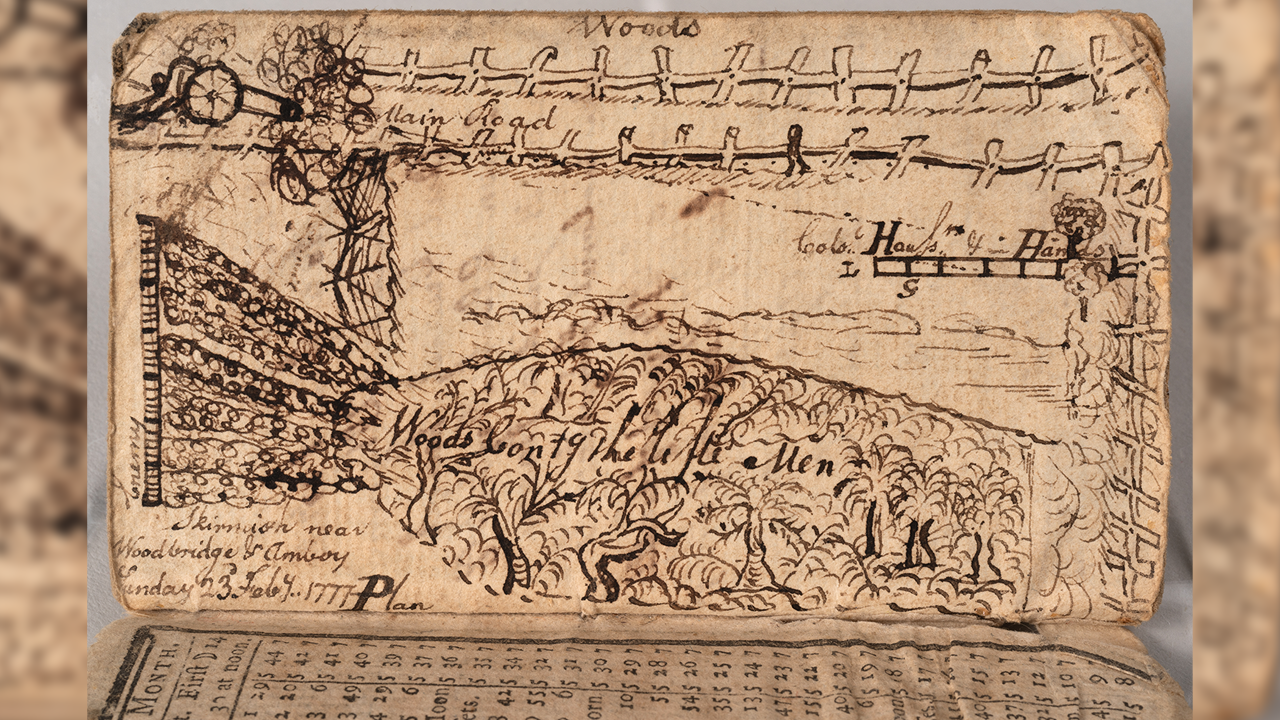Uncommon artifacts belonging to an officer within the German Regiment of the Continental Military were donated to the Museum of the American Revolution in Philadelphia.
A pockets made through Continental Military Lt. Samuel Gerock provides a first-hand account of the battles of Trenton and Princeton in addition to lesser-known battles, in step with the museum’s press shed.
The pockets is comprised of the animal pores and skin drumhead of a drum carried through his regiment clear with ink inscriptions containing a pocket-sized almanac and wartime papers within the pockets.
FLORIDA ARTIST’S PATRIOTIC ANDY WARHOL PIECE FEATURED AT POPULAR EVENT DRAWING THOUSANDS OF VISITORS

An animal alike pockets and wartime papers belonging to Continental Military Officer Samuel Gerock were donated to the Museum of the American Revolution in Philadelphia. (Museum of the American Revolution)
Gerock lived in Baltimore, Maryland, prior to settling in Fresh Bern, North Carolina, later the warfare.
“His papers not only showcase new information about the Revolutionary War, but they help to reveal the various ways veterans proved their service afterward in order to receive financial assistance,” stated Matthew Skic, the museum’s senior curator.
For more Lifestyle articles, visit foxnews.com/lifestyle
“Gerock’s testimony, paired with the fact that these documents survive, is rare and historically valuable.”

A pockets made through Officer Samuel Gerock provides a first-hand account of the battles of Trenton and Princeton in addition to lesser-known battles. (Museum of the American Revolution)
In his patch almanac, Gerock sketched the Combat of Spanktown that took playground related Woodbridge, New Jersey, Feb. 23, 1777.
Gerock introduced this stuff to a courthouse in 1818 to use for monetary aid from the government for his Revolutionary War provider.
CLICK HERE TO SIGN UP FOR OUR LIFESTYLE NEWSLETTER
The artifacts have been in ownership of Gerock’s descendants, and his great-great-great-granddaughter, Nanette Reid Osborne, donated the pieces in honor of her mom.

The Museum of the American Revolution is positioned in Philadelphia. (Leaping Rocks/Common Photographs Team by the use of Getty Photographs)
“I didn’t know that people would find them interesting, but they do, and I’m just really happy that we were able to donate them to the museum so as many people as possible can see and learn from them,” stated Osborne, in step with the shed.
“I’ve always felt like these objects shouldn’t be stuck in a drawer somewhere.”
CLICK HERE TO GET THE FOX NEWS APP
The artifacts are on show at the museum within the second-floor Oneida Indian Folk Atrium.
